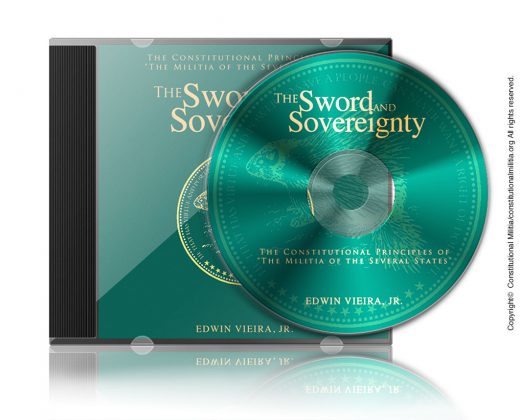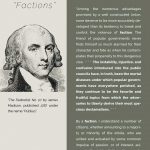Last Updated on January 22, 2021 by Constitutional Militia
In recent years, “gun-control” fanatics have been anything but idle. In all too many States, they have succeeded in promoting draconian legislation directed at what they call “assault firearms” or “military-style firearms”. Typically, these statutes ban or impose onerous restrictions on private possession of “assault firearms” (i) specified by the manufacturers’ model names, as well as (ii) identifiable by one or more general “features” (such as the capability of semiautomatic fire, a detachable box magazine, a muzzle brake or flash suppressor, a folding or otherwise adjustable stock, a pistol grip, a barrel shroud, and so on). In addition, these statutes promiscuously outlaw so-called “” (usually defined as those capable of holding more than ten cartridges), whether or not used in conjunction with some “assault firearm”.
One need not be a psychologist well versed in the twisted workings of the politically psychopathic mind to realize that “gun-control” fanatics’ long-range goal is to ban private individuals’ possession of all firearms of every type, so as to render Americans defenseless against oppression by a totalitarian police state. Although at the present time these fanatics cannot convince more than a tiny minority of Americans of the desirability of their ultimate aim, they have hit upon a strategy to achieve it step-by-step through plays on words. Their approach is based upon the old adage that “to kill a dog you must first call it mad”. To be sure, even they recognize that any firearm can be used to commit an “assault”, just as any firearm can be used for the purpose of “defense”; and that the capacity of any magazine designed to hold more even than two cartridges can be deemed “high” in comparison to a magazine holding only that many. The point of the rhetorical exercise is not to talk sense, however, but through the use of seemingly plausible propaganda to make sequential progress in banning from private possession as many firearms as possible, in as much of this country as possible, as soon as possible.
So one need not be a certified fortune-teller to predict that “gun-control” fanatics will steadily expand the definition of “military-style” and “assault” rifles to include all semiautomatic rifles, on the grounds that semiautomatic rifles of any sort are not meaningfully distinct in operation in the field from the fully automatic or burst-fire arms employed by the regular Armed Forces. (Indeed, even the Army—long addicted to the wasteful “spray-and-pray” theory of marksmanship—now increasingly trains its personnel in controlled semiautomatic fire.) Then the demand will arise to ban or severely regulate private possession of all pump-action firearms, on the theory that these are routinely employed by police and other law-enforcement personnel who are organized, equipped, and trained on a para-military basis. Next will come bolt-action rifles which can use “high-capacity magazines” (with the definition of “high capacity” constantly being lowered). For “gun-control” fanatics will surely contend that the mere ability of any rifle (or any pistol or shotgun, for that matter) to use a “high-capacity magazine” by itself renders that firearm an “assault firearm”.
This scheme has already received initial judicial support in the notorious case Kolbe v. Hogan, 849 F.3d 114 (4th Cir. 2017) (en banc), which held that:
(i) because of their general “military style” and operation, “assault firearms” are “weapons of war”, or at least are sufficiently akin to “weapons of war” to be treated as such;
(ii) being effectively “weapons of war”, “assault firearms” are excessively dangerous in private hands, as evidenced by their employment in various recent mass shootings;
(iii) as a class, “weapons of war” (or their functional equivalents) are not needed for individuals’ self-defense; and therefore
(iv) “assault weapons” are not protected by the Second Amendment to any degree, because, according to “the individual-right theory” adopted in the Supreme Court’s decision in District of Columbia v. Heller, 554 U.S. 570 (2008), the Second Amendment is primarily (if not exclusively) concerned with firearms judicially distinguishable from “weapons of war”.
Unfortunately, as Kolbe demonstrates, “the individual-right theory” of the Second Amendment promoted by the National Rifle Association and its co-thinkers—which focuses exclusively on the last fourteen words of the Amendment—cannot even address, let alone defeat, this “weapons-of-war” theory. The NRA’s approach has been, first, to lobby State legislatures in attempts to prevent statutory bans on or stringent regulations of private individuals’ possession of “assault firearms” and “high-capacity magazines” from being enacted into law. Then, when these efforts have failed, to mount equally bootless judicial challenges to such laws, based on “the individual-right theory”. And thereafter to repeat this feckless process in robotic fashion, always hoping in the face of contrary evidence for a different result. See Worman v. Healey, Civil Action No. 1:17-10107-WGY (D. Mass. 2018), particularly at pages 26-34 and 46-47 (relying on Kolbe). This approach has proven to be ineffective in, for example, California, Connecticut, Maryland, Massachusetts, New Jersey, and New York. And it surely will garner no greater success in other States in which “gun-control” fanatics contrive to gain the upper hand in State legislatures and the courts, with the big “mainstream” media’s massive propaganda apparatus cheering them on.
If the NRA can learn from its own sorry experience, it should redirect its efforts to Congress and the President, urging them to take action pursuant to Article VI, Clauses 2 and 3 of the Constitution, which (in pertinent part) provide that “[t]his Constitution, and the Laws of the United States which shall be made in Pursuance thereof * * * , shall be the supreme Law of the Land; and the Judges in every State shall be bound thereby, any Thing in the Constitution or Laws of any State to the Contrary notwithstanding”, and that “the Members of the several State Legislatures, and all executive and judicial Officers * * * of the several States, shall be bound by Oath or Affirmation, to support this Constitution”.
A. There can be no doubt that Congress is empowered under Article I, Section 8, Clause 3 (the Commerce Power) to enact a “Law[ ] of the United States” to protect common Americans’ possession of “assault firearms” and “high-capacity magazines” against State prohibitions or regulations. In pertinent part, the Commerce Power authorizes Congress “[t]o regulate Commerce * * * among the several States”. As construed in numerous decisions of the Supreme Court, this power reaches all items which move or have ever moved in, or which otherwise arguably “affect”, “Commerce * * * among the several States”.
With respect to firearms in particular, perforce of this understanding of the Commerce Power Congress has asserted its right inter alia: to define which firearms are subject to regulation by the General Government (see 18 U.S.C. § 921); to grant or withhold permission to manufacture or deal commercially in firearms (see 18 U.S.C. § 922(a)); to set age-limits for the sale, purchase, and possession of firearms (see 18 U.S.C. § 922(b) and (x)); to control the sale, transfer, or other disposition of firearms to persons it prohibits from possessing them (see 18 U.S.C. § 922(d)); to restrict classes of persons from possessing, receiving, or transporting firearms at all (see 18 U.S.C. § 922(g), (m), and (n)); to regulate the assembly of firearms from parts (see 18 U.S.C. § 922(r)); and to require“background checks” of persons seeking to purchase firearms (see 18 U.S.C. § 922(s) and (t)).
Congress has also made it clear that it can leave operable and abide by, or overrule and exclude entirely (in legal terminology “preëmpt”), State laws relating to the purchase or possession of firearms which “affect” “Commerce * * * among the several States”(see 18 U.S.C. §§ 922(b)(2) and 927).
Moreover, at one point in time, Congress took it upon itself to control traffic in and possession of what it then deemed to be “assault firearms” (see the former 18 U.S.C. § 922(v) and (w), which expired on 13 September 2004). This statute was negative in one sense, because it prohibited possession of some “assault firearms” in certain circumstances; but it was positive in another sense, because it allowed such possession in different circumstances. And it was clear at the time that no State law could have interfered with the operation of this statute.
Thus, pursuant to the broad authority it has heretofore exercised perforce of the Commerce Power, Congress could now enact a statute which protects against contrary State laws the manufacture, transportation, receipt, sale, purchase, transfer, ownership, and possession of “assault firearms” and “high-capacity magazines”—defined as various obnoxious State laws define them , or as Congress may more broadly define them—for all individuals (i) who are citizens of the United States or legally resident aliens who have made a declaration of intention to become such citizens, (ii) who are at least of some minimum age, and (iii) who are not prohibited by some law of the General Government from so dealing with firearms.
Through the effect of “preëmption”, such a statute would disable every elected or appointed official, department, or agency, and every county, municipality, or other political subdivision, of any State from enacting, enforcing, or affording legal recognition or effect for any purpose to any statute, ordinance, executive order, administrative regulation, or judicial decision operative in such State which purported to ban, to require licensing for or registration of, or otherwise to regulate the manufacture, transportation, receipt, sale, purchase, transfer, ownership, or possession of “assault firearms” or “high-capacity magazines” contrary, in addition, or supplementary to any law of the General Government applicable to such firearms or magazines.
Even without specific penalties stipulated in such a statute for State actors who dared to violate it, it would automatically override all contrary State and Local laws, and subject those malefactors to criminal prosecutions (under, say, 18 U.S.C. §§ 241 and 242) and civil actions (under, say, 42 U.S.C. § 1983) in the General Government’s courts.
Moreover, because Congress’s authority to “regulate Commerce [in firearms] * * * among the several States” reaches firearms of any and every sort or description, the Congressional statute posited here would essentially overrule aberrant judicial decisions such as Kolbe. Although Kolbe sustained Maryland’s statutory ban on “assault firearms” by means of the judicial sophistry that the Second Amendment’s guarantee does not embrace such firearms, the proposed statute would render Maryland’s law undeniably unconstitutional under Article I, Section 8, Clause 3 and Article VI, Clauses 2 and 3 of the Constitution, simply because the Commerce Power undoubtedly applies to all firearms which “affect” “Commerce * * * among the several States” whether or not they are protected by that Amendment, and the said statute would undoubtedly be a “Law[ ] of the United States * * * made in Pursuance” of the Commerce Power.
B. Some champions of “the right of the people to keep and bear Arms” guaranteed by the Second Amendment might object that a general invocation of the Commerce Power—even though specifically on behalf of protecting Americans’ possession of “assault firearms” and “high-capacity magazines”—might be taken to concede sub silentio the presumptive validity of many highly questionable restrictions on Americans’ acquisition and possession of firearms which Congress has previously enacted under color of that power. The short answer to this is: “one thing at a time”. Although the General Government’s entire regulatory scheme relating to firearms surely needs comprehensive reëvaluation and overhaul, attempting a thoroughgoing reform at this juncture would only throw up unnecessary and perhaps insurmountable political roadblocks to any reform. Although limited in scope, the statute posited here would certainly be an improvement on the present situation. And something is better than nothing.
Nonetheless, it would not be amiss to consider for purposes of argument a statute with a greater degree of constitutional particularity. Section 1 of the Fourteenth Amendment provides (in pertinent part) that “[n]o State shall make or enforce any law which shall abridge the privileges and immunities of citizens of the United States”. And Section 5 of that Amendment provides that “[t]he Congress shall have power to enforce, by appropriate legislation, the provisions of this article.” Notwithstanding Kolbe, common Americans’ access to and possession of “assault firearms” and “high-capacity magazines” are protected by the Second Amendment—particularly in consideration of the first thirteen words thereof—and as such are among “the privileges and immunities of citizens of the United States”. See Scott v. Sandford, 60 U.S. (19 Howard) 393, 403, 416-417 (1857), particularly in light of the analysis in William W. Crosskey, Politics and the Constitution in the History of the United States (Chicago, Illinois: The University of Chicago Press, 1953), Volume II, Chapter XXXI. So it would undoubtedly be constitutional for Congress to determine as much, and on that basis to enact the statute posited here, in order “to enforce” those “privileges and immunities” against any “State [which] shall make or enforce any law which shall abridge th[os]e privileges and immunities”. And a statute predicated upon the Second and Fourteenth Amendments could not be faulted for tacitly accepting the possibility that Congress itself might have “abridge[d] th[os]e privileges and immunities” through legislation enacted under color of the Commerce Power in years past.
The evident problem with this approach, however, is that rogue judges might—nay, surely would—attempt to void such a statute on the specious basis that Congress’s assertions that “assault firearms” are protected under the Second Amendment, or that “the right of the people to keep and bear Arms” is within “the privileges and immunities of citizens of the United States”, or both are wrong, and in any event are not bonding upon the Judiciary. After all, the errant judges who decided Kolbe held, as a matter of their absurdly twisted misconception of the Second Amendment, that “assault firearms” are not within the ambit of “the right of the people to keep and bear Arms”. See 849 F.3d at 121, relying on dicta in District of Columbia v. Heller, 554 U.S. 570, 627-628 (2008). And if that reasoning were constitutionally cogent, on what basis could Americans’ acquisition and possession of such firearms be found among those “privileges and immunities”? Therefore, in light of the proclivity of such jurists to declare that their (mis)interpretations of the Constitution are the Constitution, to which everyone else in the entire world must give credence and obedience, reliance on only the Second and Fourteenth Amendments to solve the problem posed by State laws which ban “assault firearms” would simply create another problem: namely, how are Congress and the President to enforce the remedial statute in the face of obstruction from courts staffed by partisans of “gun control” intoxicated by the pernicious doctrine of “judicial supremacy”?
The obvious answer is that, because no one can doubt that “the privileges and immunities of citizens of the United States” include statutory rights created by Congress, the posited statute enacted pursuant to the Commerce Power which recognized the rights of common Americans to acquire and possess “assault firearms” notwithstanding any contrary State law could be enforced through the Fourteenth Amendment, no matter what idiotic notions about the inapplicability of the Second Amendment rogue judges might entertain. This solution, however, raises once again the question of whether the Commerce Power is the most suitable constitutional vehicle for the purpose at hand.
In addition, by the Fourteenth Amendment’s very terms, “the privileges and immunities of citizens of the United States” do not apply to aliens legally resident in this country who have made declarations of their intentions to become citizens—and on that basis should have some equitable claim to acquire and possess “assault firearms”.
C. All of these difficulties and inconveniences could be obviated if the statute posited here were premised on Article I, Section 8, Clause 16 of the Constitution, which (in pertinent part) delegates to Congress the power “[t]o provide for * * * arming * * * the Militia”. This power is not dependent upon the Commerce Power, the Second Amendment, the Fourteenth Amendment, or any other provision of the Constitution. It is purely a Congressional power, in the exercise of which the Judiciary plays no rôle whatsoever save acquiescence. For Article I, Section 8, Clause 18 of the Constitution authorizes Congress “[t]o make all Laws which shall be necessary and proper for carrying into Execution the * * * Powers [in Clauses 1 through 17]”. And “the sound construction of the constitution must allow to the national legislature that discretion, with respect to the means by which the powers it confers are to be carried into execution, which will enable that body to perform the high duties assigned to it, in the manner most beneficial to the people. Let the end be legitimate, let it be within the scope of the constitution, and all means which are appropriate, which are plainly adapted to that end, which are not prohibited, but consist with the letter and spirit of the constitution, are constitutional.” McCulloch v. Maryland, 17 U.S. (4 Wheaton) 316, 420 (1819). Thus, Congress alone is entitled to decide what may be “necessary and proper” in the exercise of its power “[t]o provide for * * * arming the Militia”—including whom it will arm, with what firearms they will be provided, and what disabilities Congress may impose upon the States to ensure that its decisions in those particulars are effectuated.
A tremendous amount of legal-historical material is available to answer the question of what “arming the Militia” in Article I, Section 18, Clause 16 means in terms of the types of “arm[s]” which may be involved, as well as how that phrase relates to the phrases “[a] well regulated Militia” and “the right of the people to keep and bear Arms” in the Second Amendment. See, e.g., Edwin Vieira, Jr., The Sword and Sovereignty: The Constitutional Principles of “the Militia of the Several States” (Front Royal, Virginia: CD-ROM Edition, 2012). For the purposes of this commentary, though, a detailed review of the documentary record is not required. For in United States v. Miller, the Supreme Court made it clear that the Second Amendment protects every firearm which “has some reasonable relationship to the preservation or efficiency of a well regulated militia”, which is “any part of * * * ordinary military equipment”, and the “use [of which] could contribute to the common defense”. 307 U.S. 174, 178 (1939). In light of the holding in Kolbe that contemporary “assault firearms” (together with “high-capacity magazines”) are equivalent or akin to “weapons of war”—which, of course, do “ha[ve] some reasonable relationship to the preservation or efficiency of a well regulated militia”, which are “part of * * * ordinary military equipment”, and the “use [of which] could contribute to the common defense”—it follows that Congress may “provide for * * * arming the Militia” with such firearms (along with all other firearms which might satisfy the broad standards set out in Miller).
Who, though, are the members of “the Militia” whom Congress may arm? In pertinent part, the relevant statute now provides that:
(a) The militia of the United States consists of all able-bodied males at least 17 years of age and, except as provided in section 313 of title 32 [of the United States Code], under 45 years of age who are, or who have made a declaration of intention to become, citizens of the United States, and of female citizens of the United States who are members of the National Guard.
(b) The classes of the militia are—
(1) the organized militia, which consists of the National Guard and the Naval Militia; and
(2) the unorganized militia, which consists of the members of the militia who are not members of the National Guard or the Naval Militia.
10 U.S.C. § 246. Therefore, in the exercise of its power “[t]o provide for * * * arming the Militia” Congress may enact a statute which stipulates that all members of “the unorganized militia”—at this time, “all able-bodied males at least 17 years of age and * * * under 45 years of age who are, or who have made a declaration of intention to become, citizens of the United States” and “who are not members of the National Guard or the Naval Militia”—shall have the right to acquire and possess “assault firearms” and “high-capacity magazines”, notwithstanding any State statute, ordinance, or other law, or any decree or decision of any court, to the contrary.
Inasmuch as the present statutory age-limits for “[t]he militia of the United States” do not adequately protect many Americans for whom the possession of “assault weapons” should be guaranteed by law, as part of the reform proposed here the statute quoted above should be amended to provide as follows:
(a) The militia of the United States consists of all able-bodied male and female individuals who are, or who have made a declaration of intention to become, citizens of the United States.
(b) The classes of the militia are—
(1) the organized militia, which consists of the National Guard and the Naval Militia; and
(2) the unorganized militia, which consists of the members of the militia who are not members of the National Guard or the Naval Militia, with (i) those at least 17 years of age and under 45 years of age to be included in the active unorganized militia, and (ii) those at least 45 years of age and older to be included in the reserve unorganized militia.
Repelling the contemporary assault on “assault firearms” in this manner would have two benefits. First, it would immediately frustrate the “gun-control” fanatics’ plans to disarm Americans by “the death of a thousand cuts”. Second, it would at least begin the necessarily lengthy process of constitutionally revitalizing “the Militia” throughout the United States. Eventually, of course, Congress would have to exercise to the full its power “[t]o provide for organizing, arming, and disciplining, the Militia” to that end. For this, systematic governmental direction, oversight, and assistance by both the General Government and the States would be required. At the present time, though, it would suffice for Congress to enable members of “the unorganized militia” to arm themselves through the free market with the type of firearms arguably most suitable for “contribut[ing] to the common defense”—that is, modern “assault firearms”—free from interference by rogue public officials in the States, and rogue judges in the courts of the United States.
Readers of this commentary should not expect the NRA to promote this proposal on its own initiative, though. Rather, in light of that organization’s stubborn adherence to “the individual-right theory” of the Second Amendment, as well as its studied indifference if not hostility to anything to do with the Militia, they should anticipate not only reluctance but even resistance on its part. To put the matter in the most charitable light, the NRA will need to be prompted to take an active and constructive part in this endeavor. A good start might be for readers of this commentary—especially those who are NRA members—to write to the NRA’s new President, Oliver North, urging him to encourage the organization’s staff to look into this matter with an open mind.
©2018 Edwin Vieira, Jr. – All Rights Reserved.





































